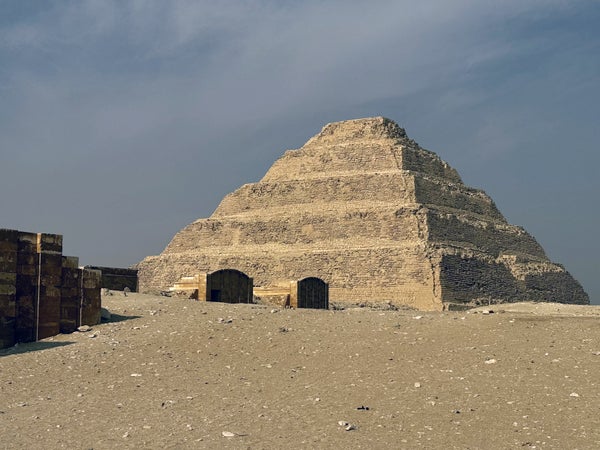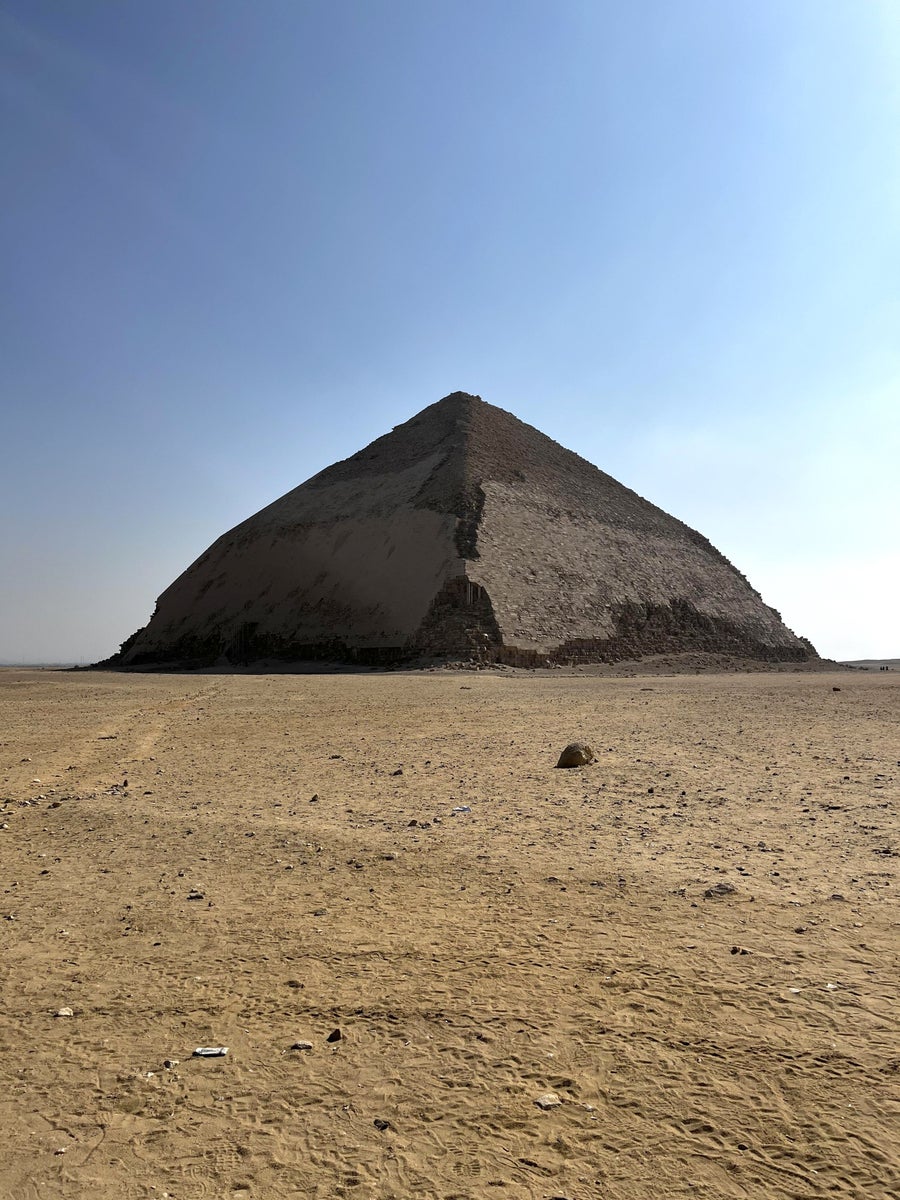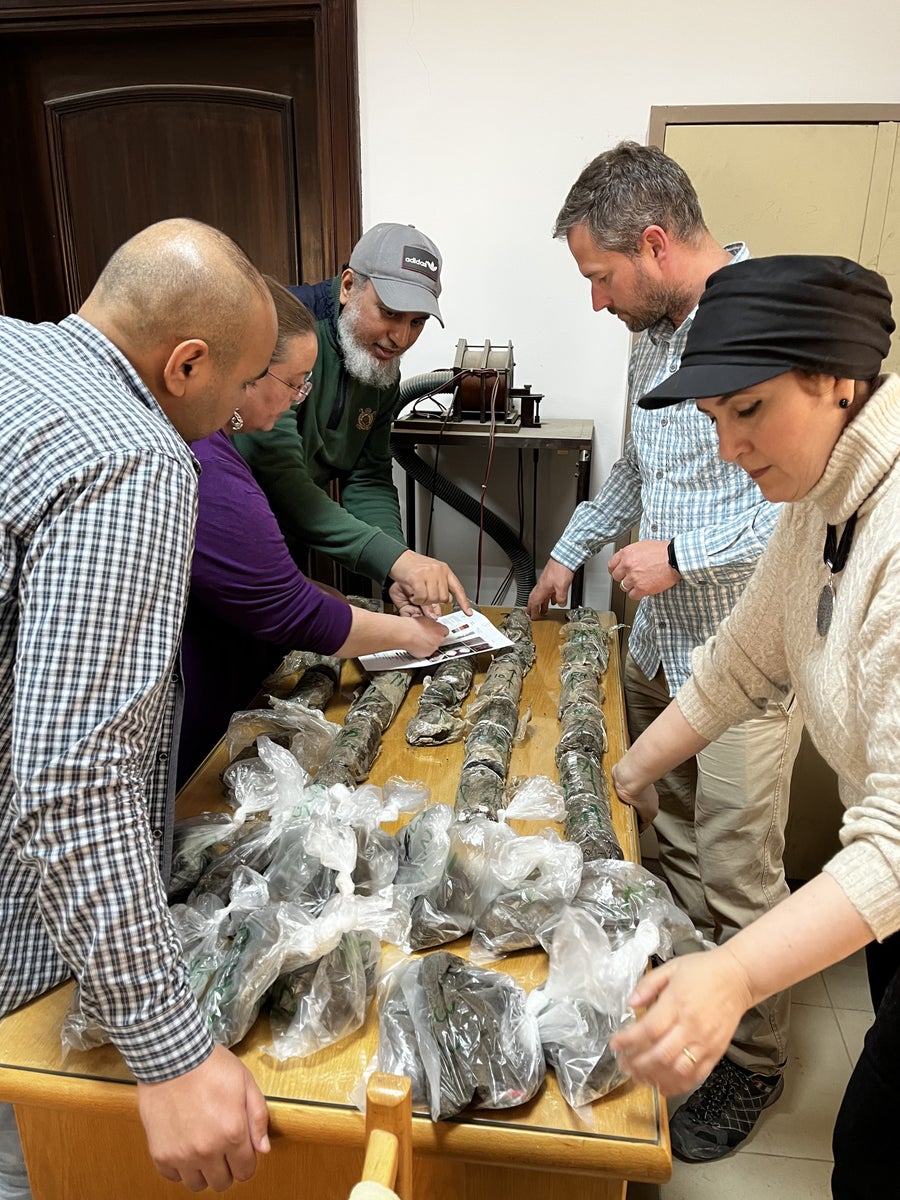A misplaced department of the Nile could remedy the long-standing thriller of Egypt’s well-known pyramids
A former stretch of the Nile, now buried beneath the Sahara Desert, may assist scientists perceive how the Egyptians constructed the pyramids and tailored to the parched panorama.

The Step Pyramid of Djoser was constructed through the Third Dynasty of Egypt.
On a rocky, arid plateau in Egypt’s Western Sahara desert stands the final of the Seven Wonders of the Historical World: the Nice Pyramid of Giza. The 455-foot-tall stone construction and several other smaller pyramids within the space have lengthy supplied analysis materials for scientists working to decipher historic Egyptian inscriptions to know how they constructed such large monuments—and why they constructed them to this point up the Nile. , the soul of their nice civilization.
geologist Iman Ghonim Says he is been pondering that final thriller for years. “I used to be born and lived most of my life in Egypt,” she says, “and one of many questions I believe I requested myself from a really younger age was: ‘Why did our ancestors construct the pyramids on this specific, unusual place – and why? So away from the water?’ I had this sense that there was extra.”

Bent Pyramids on the Necropolis of Dahshur. The pyramid was constructed through the Fourth Dynasty of Egypt.
About supporting science journalism
In the event you loved this text, please contemplate supporting our award-winning journalism Membership By buying a subscription you might be serving to to make sure the way forward for influential tales in regards to the discoveries and concepts that form our world immediately.
Professor Ghoneim of the College of North Carolina Wilmington has just lately proven that the pyramids have been constructed at was Really very near the water. (They stand immediately greater than 5 miles from the closest banks of the Nile.) By analyzing batches of satellite tv for pc pictures and sediment samples collected from deep under the desert floor, he and his analysis group created a Historical department of the long-lost Nile which as soon as ran by the foothills subsequent to the Giza pyramid grounds. Ghoneim mentioned the channel, which the examine group named Ahramt (Arabic for “pyramid”), is probably going how builders transported supplies to the pyramid’s building website. Understanding its course may also help archaeologists seek for potential websites of historic human settlements which may be buried beneath the huge, dusty plains. The researchers detailed their findings in a examine revealed Thursday Communication Earth and atmosphere.
Scientists have lengthy suspected that the Nile River—which flows north for about 4,100 miles from Lake Victoria in Tanzania, Kenya, and Uganda to the Mediterranean Sea—as soon as had a number of branches. Previous analysis signifies that through the mid-Holocene epoch, about 10,000 to six,000 years in the past, the Nile floodplain was a lush, swampy habitat that turned slim and largely barren after a protracted interval of low rainfall and elevated aridity within the late Holocene.

Iman Ghoneim’s analysis group organized the collected soil samples.
As we speak’s scorched, unforgiving Sahara is a troublesome place to conduct the type of fieldwork concerned in exploring former river channels. Earlier than braving the atmosphere for a dig, the analysis group makes use of radar satellites to see beneath the Earth’s prime layer and produce pictures of the floor. These revealed delicate patterns and textures within the floor layers close to the pyramids—options that differ from different areas of the desert and point out the long-ago presence of working water. “We have been seeing these scattered pure options close to the (pyramid) area, like lengthy depressions and ditches, now fully lined by farmland and sand,” Ghonim mentioned. “It may be very onerous to see if you do not know what to search for.”
Ghoneim and his colleagues then traveled to Egypt, the place they used massive drills to excavate two “cores,” or earth cylinders, extending dozens of miles under the floor. When the drill pulled up sand from the depths, Ghonim knew the group had discovered the remnants of a misplaced river. “In fact, there’s sand on the floor,” he says. “However the presence of sand and different coarse sediments under the floor—moderately than clay or silt—means that the area as soon as had flowing water.”

The aqueduct of the traditional Ahram department borders a lot of pyramids spanning Egypt’s Previous Kingdom to the Second Intermediate Interval and its Third and thirteenth Dynasties.
Researchers tracked Ahram’s earlier course for about 40 miles. Ghonim mentioned it may very well be longer and additional analysis may decide the channel’s normal depth and width. It isn’t clear why the waterway dried up, however the group speculates {that a} mixture of tectonic plate actions, wind-blown sand and extreme drought within the late Holocene precipitated its demise.
God recruits, a geology professor on the College of Texas at Austin, who was not concerned within the new examine, mentioned understanding how historic societies have been formed by their ever-changing landscapes and waterways may assist information trendy efforts to develop infrastructure properly in an period of local weather change. . The department of the traditional Nile additionally serves as a reminder that “resilient human societies are by no means inflexible,” says Adam Rabinowitz, an archeology and classics professor at UT Austin, is at the moment engaged on a challenge to arrange Texans for dramatic, climate-driven adjustments to the state’s water availability over the subsequent 25 years. “We have to discover how previous societies responded to related climate-related challenges … in order that we are able to higher perceive the human expertise of surviving and adapting to a serious environmental change.”
Ghoneim mentioned he hopes to piece collectively a map of the Nile’s former life by additional learning the Ahramt and different river channels which may be misplaced beneath the desert. “For many cities, we’re not speaking about how water helped construct the pyramids, however how human civilizations in any other case trusted it and tailored to its adjustments,” she says. “And after we study from the previous, we are able to put together for the longer term.”
#Egypts #well-known #pyramids #overlook #longlost #department #Nile



